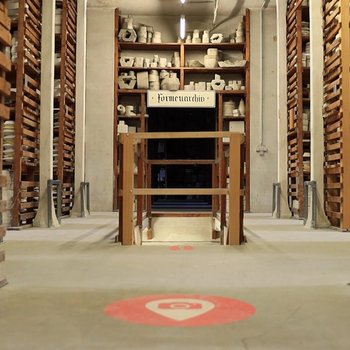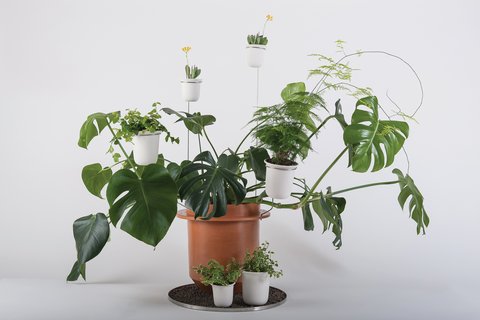
Dossofiorito: The Phytophiler
© Courtesy of Dossofiorito
The world of Livia Rossi and Gianluca Giabardo – the pair behind Italian design studio, Dossofiorito, (literally “flowery hill”) – is suffused by their passion (or, shall we say obsession?) for plants and their shared need to be surrounded by them. From their home in Verona, Italy to their studio – a former car workshop with large plant-friendly bays – each corner of their living and working environments is enriched by a wide variety of green specimens. “Perhaps too many!” they joke.
The plants that share their house, balcony and studio are part of the family – along with their dog, Aru. The two designers are keen to creatively investigate the relationships that one can develop with the vegetal world and its invisible life.
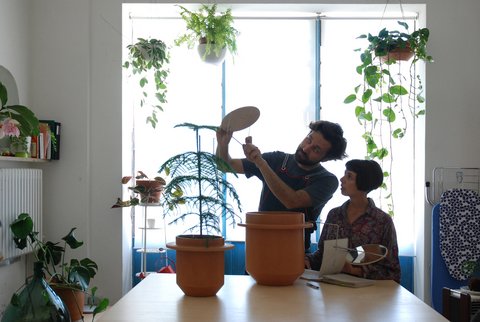
Livia Rossi and Gianluca Giabardo of Dossofiorito at work
© Courtesy of Dossofiorito
What started as a “curious exploration”, inevitably led the pair to learn more about the hidden life of plants, giving birth to a series of playful projects where plants are not reduced to “decorative elements”, but become the missing pieces that make a project fully realised and meaningful.
Ultimately, in order to survive, houseplants need us, the humans, to take care of them. Although it may seem rather obvious to say, knowing the needs of each of these plants is fundamental. “Without becoming scientists, trying to understand plants is like learning a different language. This can only be achieved with care, closeness and observation”, the couple explain.
Contrary to the current trend, Dossofiorito does not utilise go-between devices or any kind of high-tech applications, as these would “increase the distance between us and the plants”, explain the designers. So, instead of creating short-term and artificial connections, their projects – from the Phytophiler to Ludmilla – are conceived as interactive tools that help the user to become closer to nature and sharpen their curiosity and knowledge about the plant.
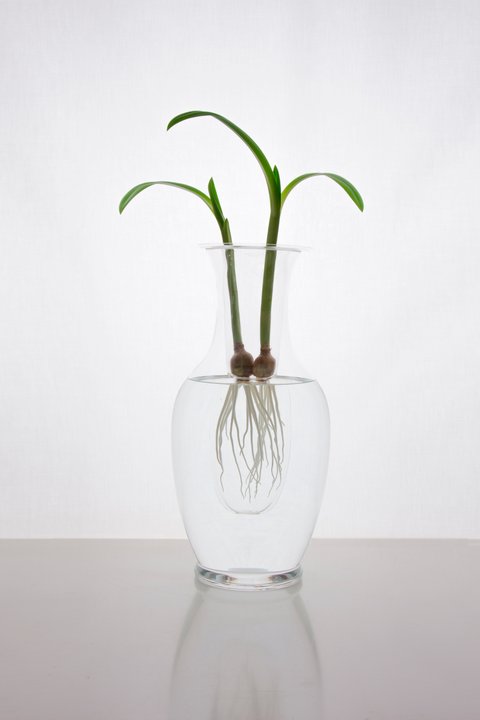
Dossofiorito: Ludmilla - hand blown crystal vase
© Courtesy of Dossofiorito
Exploring human relationships with plants has not only helped Livia and Gianluca to develop a better understanding of the green world, it has also led them to question the global plant industry. “The problem”, they argue “is that although we might be more responsible consumers when it comes to food or clothes, we are not yet used to questioning where the plants and flowers that reach our homes come from, or how they are grown. Do they come from the other side of the world, where there is an uncontrolled use of fertilizer and pesticides affecting the soil, exposing underpaid workers to toxic substances, and compromising entire ecosystems? If this is the case, our attempt in making our environment greener is a complete failure!” the pair suggest.
“Plants and flowers are a democratic way to bring beauty and joy to everyday life,” they say. “It’s important that they remain accessible to everybody. It’s also important to reserve space for indoor plants, as not everybody has access to a garden or a balcony.”
As a design studio, Dossofiorito is well placed to question common practices, learn from other customs and turn discoveries into actions – as the Epiphytes collection demonstrates.
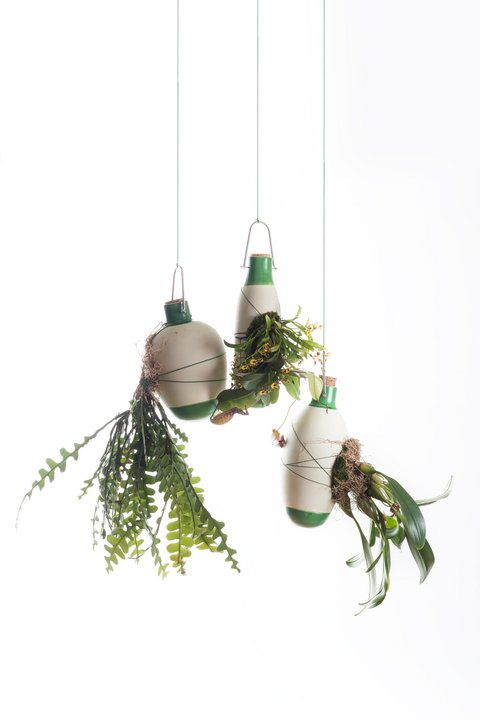
Dossofiorito: Epiphytes
© Courtesy of Dossofiorito, Foto: Federico Villa
The project was born out of a simple observation: the majority of the houseplants belonging to the epiphyte family, such as ferns and orchids, which do not require soil to grow as they are able to seize on trees in the natural world, are sold in pots, despite their metabolism.” Determined to propose a positive alternative that could respect the epiphyte’s “natural growing attitudes”, but without compromising on aesthetics, Dossofiorito came up with the concept of a series of terracotta suspended vases.
But Epiphytes is not the common vase everyone has in mind! In fact, instead of being arranged inside the container, plants are fixed on the external surface of the object, which is then filled with water and sealed beforehand. The porosity of the terracotta provides each specimen with the right amount of humidity that it needs to grow. The ingenious device was inspired by two ancestral traditions: the olla – a widespread practice in Central America which uses the porosity of ceramic jars buried in the ground to irrigate plants; and the “methods using terracotta pots filled with water used in tropical countries to cultivate orchids”, explain the designers.
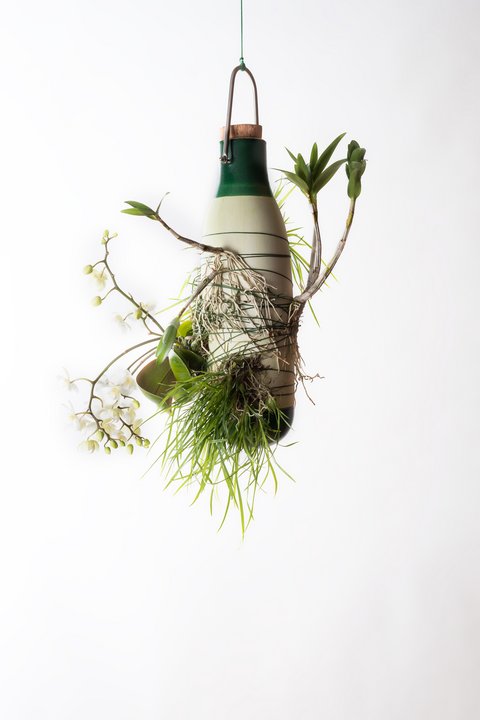
Dossofiorito: Epiphytes
© Courtesy of Dossofiorito, Foto: Federico Villa
In line with recent scientific studies demonstrating how plants can move, communicate, react to external stimulus and even memorise past experiences, the pair grew an awareness of the metabolism of plants which helped them analyse the way we understand and cohabit with the vegetal world.
Ultimately, this knowledge led the two designers to “develop an irresistible longing for gardens, landscapes and ecosystems” and to “stop considering plants as isolated entities, but instead, as a system, a community… Although we don’t know yet where this exactly will take us.”
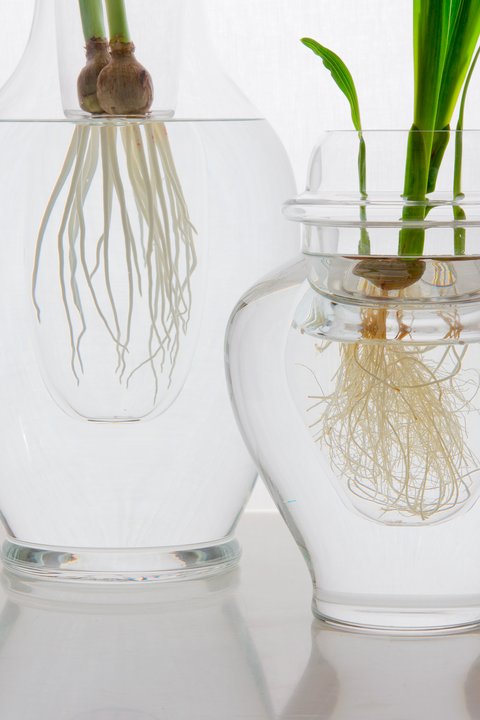
Dossofiorito: Ludmilla - hand blown crystal vase
© Courtesy of Dossofiorito
Also of interest:
Inspired by ongoing initiatives and projects of contemporary international designers, engineers, artists and writers, the following phyto-based actions are not addressed solely to practitioners, but call for everyone's (including producers’ and consumers’) sense of respect, responsibility, equity and empathy towards plants. They should be read not as rules but as invitations to see the world through the perspective of plants.
![[Translate to English:]](/fileadmin/_processed_/7/e/csm_Plant_Fever_The_Manifesto_of_Phyto-centred_Design_Photo__c__Olly_Cruise__studio_d-o-t-s_-_Horizontal_cut_High_Res_96813b1039.jpg)
What remains of us? Currently quite a lot. In her film collage "Die Hüter des Unrats - eine kurze Geschichte des Abfalls" (The Guardians of Garbage - A Short History of Waste), which can currently be seen at the Japanisches Palais, Susann Maria Hempel takes a sarcastic look at the way we deal with waste and its ecological consequences. About the stomachs of predatory fish, chickens and giant tortoises as an archive.
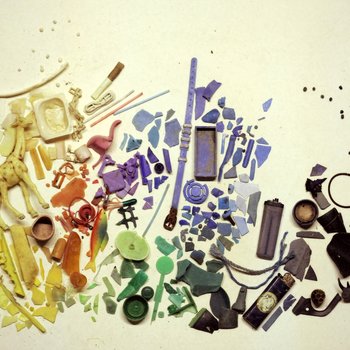
Part 2 of MeissenLab examines corporate culture and production at the Meissen manufactory in GDR times. Tradition is key here; some Meissen families can trace their employment at the “Manu” as far back as the 18th century.
